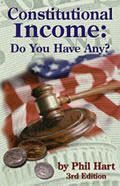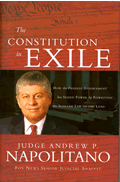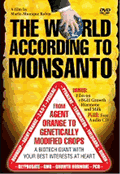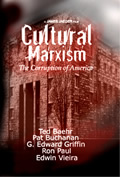COGNITIVE
DISSONANCE AND THE SECOND AMENDMENT
PART 1 of 2
By
Dr. Edwin Vieira, Jr.,
Ph.D., J.D.
November 28, 2014
NewsWithViews.com
“Cognitive dissonance” denotes the state of psychological stress which affects an individual who simultaneously entertains two mutually contradictory beliefs, or who comes upon information which conflicts with his beliefs. (Cognitive dissonance differs from “doublethink”, as imagined by George Orwell in his novel 1984, because “doublethink” describes an individual’s ability to hold two mutually contradictory beliefs in his mind at the same time, believing both of them to be true, even and especially if neither of them has any relationship whatsoever to truth.)
Cognitive dissonance is relevant to various self-styled champions of the Second Amendment because most of them should suffer from it in a form both acute and obvious. The Second Amendment provides that “[a] well regulated Militia, being necessary to the security of a free State, the right of the people to keep and bear Arms, shall not be infringed”. The exponents of the Amendment to whom I refer volubly promote its last fourteen words, without saying much of anything about the first thirteen. Indeed, they often try to distance themselves from anything with even a tangential connection to any conception of “militia”. Even as they profess their belief in the Second Amendment, they consign half of it to oblivion. Apparently they imagine that the first thirteen words, on the one hand, and the remaining fourteen words, on the other, somehow stand in mutual opposition, notwithstanding that they appear in the selfsame sentence. Or they believe that each set of words is irrelevant to the other, again although they are contained in the very same sentence. Or both. In order to overcome the psychological discomfort that must arise out of their dissecting this single sentence and discarding half of it, these advocates of the Second Amendment supply the rationalization that “the right of the people to keep and bear Arms” is an individual right, whereas “[a] well regulated Militia” is a collective undertaking—and therefore they can dismiss the Amendment’s first thirteen words as not having any controlling legal, logical, or even linguistic influence on the following fourteen.
Now, if cognitive dissonance is the state of psychological angst which affects an individual who simultaneously attempts to entertain two mutually contradictory beliefs, were the Founders of this country victims of that disorder when they adopted the Second Amendment (and, for that matter, the Militia Clauses of the original Constitution in Article I, Section 8, Clauses 15 and 16, and Article II, Section 2, Clause 1)? Certainly not. They understood—and relied upon—the principle that, “‘[i]n expounding the Constitution of the United States, every word must have its due force, and appropriate meaning; for it is evident from the whole instrument, that no word was unnecessarily used, or needlessly added. * * * Every word appears to have been weighed with the utmost deliberation, and its force and effect to have been fully understood’”. Williams v. United States, 289 U.S. 553, 572-573 (1933). So, with respect to the clause “[a] well regulated Militia, being necessary to the security of a free State”, “[i]t cannot be supposed that the framers of the Constitution did not use this expression with deliberation or failed to appreciate its plain significance”. Wright v. United States, 302 U.S. 583, 587-588 (1938). Obviously, the Framers both of the original Constitution and of the Second Amendment were fully aware of the relationship between individual and collective rights (and duties, for that matter) with respect to “the right of the people to keep and bear Arms”, because they conjoined those rights (and duties, too) in the Militia. The Framers well knew that a collective institution such as “[a] well regulated Militia” could be—indeed, would have to be—the protector of each individual member’s rights. The “well regulated Militia” to which the Second Amendment refers consist of citizens each of whom obviously must enjoy an indefeasible “right * * * to keep and bear” the particular “Arms” necessary for his own Militia service. For that reason, the Militia themselves are the ultimate guarantors of the right (and, as well, of the duty) of each individual eligible for Militia service “to keep and bear Arms”. And, by personally possessing suitable “Arms”, each individual reciprocally contributes to the effectiveness of the Militia, and thereby to “the security of a free State”. In short, the Second Amendment cannot be construed so as to set up a distinction, let alone a conflict, between an “individual” and a “collective” “right of the people to keep and bear Arms”. The “individual” and the “collective” right are two sides of the very same coin. “[T]he right of the people to keep and bear Arms” is necessary to the existence of the Militia; and the existence of the Militia guarantees, as nothing else can, “the right of the people”. (As I have dealt with this subject at great length in my CD-ROM book The Sword and Sovereignty, I leave it to the reader interested in an extended treatment to consult that work.)
Now consider the most prominent, vocal, and politically influential of the advocates of “the [individual] right of the people to keep and bear Arms”: namely, the National Rifle Association. In deference to “full disclosure”, I must identify myself as a long-time member of the NRA, as well as an NRA-certified firearms instructor in several disciplines. With that background, I cannot be dismissed as simply an antagonist of the organization. Nonetheless, with respect to its position on the Second Amendment I am a critic of the NRA. But justifiably so. For it is a work of mercy to “admonish the sinner”.
At
the most basic level, the NRA does not understand the Second Amendment
because it does not understand the constitutional concept of “[a]
well regulated Militia”. For a recent example,
writing in the American Rifleman magazine (November 2014),
the NRA’s Executive Vice President, Wayne
LaPierre, premonished his readers that the 2014 elections
can mark a turning point for our nation’s survival. What’s at stake * * * is more than preserving the Second Amendment. It is securing the very future of our free nation as we know it—if we use the power of our votes to put an end to the moral, political, financial and constitutional chaos that grips us today. [Page 12]
What, though, could he possibly have meant when he wrote, “more than preserving the Second Amendment”? The Second Amendment addresses nothing less than preserving this country as “a free State” at every level of the federal system. What could be more at stake than that—and always, not just when elections happen to be held? The Second Amendment informs us that elections and votes are not enough to insure “the security of a free State”. Indeed, under some circumstances elections and votes might actually threaten that security. For history records many instances in which majorities have voted to impose tyranny on minorities, and even on themselves (albeit in that case perhaps inadvertently). Rather than elections and votes, the Second Amendment instructs us that “well regulated Militia”, consisting of “the people” properly organized with “Arms” in their own hands, are “necessary to the security of a free State”.
Mr. LaPierre himself seemed to recognize that elections may prove, not only unnecessary to, but even destructive of, “the security of a free State”, when he warned that,
[i]f we do not elect a national legislature that will hold Obama accountable, he and his radical cohorts will destroy the tree of liberty. Just mark my words.
We have already seen the steady erosion of our core constitutional values: the right to speak, the right to assemble, the right to be secure in our persons and papers. And we have seen relentless attacks on the right to keep and bear arms, especially our right to self-protection.We are headed down the path to the destruction of our freedom, our way of life and the pollution of the American dream. [Id.]
On what distant planet, though, has Mr. LaPierre been sojourning for the last several decades? America has suffered through election after election while all of this has been going on, and not just during the questionable tenure of the possibly faux “President” Obama, but also under the Administrations of the undoubtedly real Presidents Clinton and Bush (and even earlier). During this period, this country’s national nightmare—what Mr. LaPierre correctly described as Americans’ trip down “the path to the destruction of our freedom”—has become progressively more frightening, as “the path to * * * destruction” has become ever more steep in its descent, election after election. That is because these elections have consistently ensconced in public office individuals who, if not actually intent upon destroying the constitutional foundations of American society and government, have proven too corrupt or incompetent to protect those foundations against assault by others committed to the full and final eradication of “our way of life”. (And the most recent elections in 2014—in which Mr. LaPierre set such great store—have not appreciably improved this situation, either.)
The Second Amendment identifies “[a] well regulated Militia”—not elections, or anything else for that matter—as “being necessary to the security of a free State”. Nevertheless, the one thing conspicuous by its absence in the American Rifleman or other NRA publications is any discussion of “well regulated Militia”, let alone any analysis of why “well regulated Militia” are “necessary to the security of a free State” at every level of America’s federal system in a way that no election can ever be. To my knowledge, the American Rifleman and other NRA publications have never expended any significant amount of typeface to educate their readers as to (for example): (i) the constitutional definition of “[a] well regulated Militia”; (ii) what legal and especially political purposes “well regulated Militia” are intended to serve; (iii) whether any “well regulated Militia” exists in any State today, and if not why not; (iv) how “well regulated Militia” could and should be revitalized in each of the several States; and (v) what functions modern revitalized Militia could and should perform within and for the States and their citizens. This is rather a stark deficiency in the public output of an organization which prides itself on its dedication to the defense of the Second Amendment.
Perhaps, though, the present leadership of the NRA should not be singled out for too stringent censure. For the organization’s misunderstanding of the constitutional conception of “[a] well regulated Militia” arose at and has persisted since its inception. To be sure, the NRA can claim some affinity to the purpose of the Second Amendment, because it was founded in order to teach Americans marksmanship. As its history explains,
[d]ismayed by the lack of marksmanship shown by their troops, Union veterans Col. William C. Church and Gen. George Wingate formed the National Rifle Association in 1871. The primary goal of the association would be to “promote and encourage rifle shooting on a scientific basis,” according to a magazine editorial written by Church. [“A BRIEF HISTORY OF THE NRA”.]
Yet its founders and those who have succeeded them obviously have never grasped, and to this day still do not comprehend, for what reason the NRA might ever have been considered necessary or even expedient. The initial question was: “Why had the Union troops proven themselves to be such inept marksmen?” The answer was straightforward: Inasmuch as no truly constitutional “well regulated Militia” were in operation immediately prior to the Civil War in any of the several States, no near-universal, compulsory training in arms in time of peace had taken place among the general population. As Article 13 of Virginia’s Declaration of Rights (1776) exemplified, America’s Founders knew that “a well regulated militia” is “composed of the body of the people, trained to arms”—not of some small, élitist group, with the rest of the citizenry relegated to inactivity, ignorance, and lack of instruction. So, the constitutional requirement of near-universal service (and therefore training) in the Militia having been allowed to atrophy, of course the Union troops came to their military service devoid of even rudimentary proficiency in the use of arms. That is, the NRA’s mission became plausible only because the institutions the Second Amendment declares to be “necessary” had theretofore been rendered moribund.
Despite its founders’ good intentions, from its inception the NRA has actually continued, facilitated, and even encouraged this unsatisfactory state of affairs. To be sure, the NRA always did train those Americans who voluntarily joined the organization or participated in its programs of instruction in marksmanship with firearms. So it always could have been near-universal in its effect. Nonetheless, it never would be near-universal in its operations, because no constitutional Militia, with near-universal compulsory service, including actual training with arms—and for which the NRA could have devised suitable training programs, supplied instructors, established firing ranges, and so on—existed in 1871 or thereafter in any of the several States.
Thus the likelihood of the NRA’s success in achieving its stated goal was never very great. Inasmuch as all too many Americans since 1871 have lacked sufficient understanding of why “[a] well regulated Militia” is “necessary to the security of a free State”, in their ignorance have refused to assume the minor burdens of participating in such a Militia in each State, and have been aided and abetted in their unpatriotic sloth by Congress and the States’ legislatures, they could hardly have been expected to join some private organization in order to obtain the training with firearms which might have prepared them for service in the Militia (or in the regular Armed Forces, for that matter). So, even today, the NRA can boast of only some four million members, in a country with probably one hundred fifty million or more individuals eligible for the Militia.
|
|
This disparity between potential membership and actual participation has not been significantly narrowed by the NRA’s recent promotion of self-defense against common criminals as the supposedly most important reason for individuals to obtain and train with arms. Although in principle violent common criminals could victimize anyone in America, in practice they threaten a relatively small percentage of the population. The large and vociferous lobby which promotes “gun control” shrilly disparages and even demonizes the use of firearms for individual self-defense. And no constitutional principle—other than service in the Militia, which are organized for both community and individual self-defense—requires anyone to equip and train himself for the latter purpose. So, as a goad for the voluntary near-universal training of the general population—“the body of the people, trained to arms”—a concern for individual self-defense is at best problematic. For part two click below.




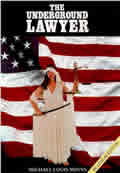



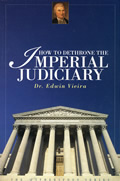
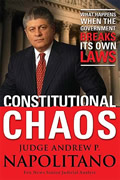
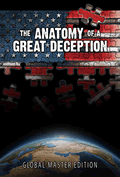




 Share
This Article
Share
This Article
